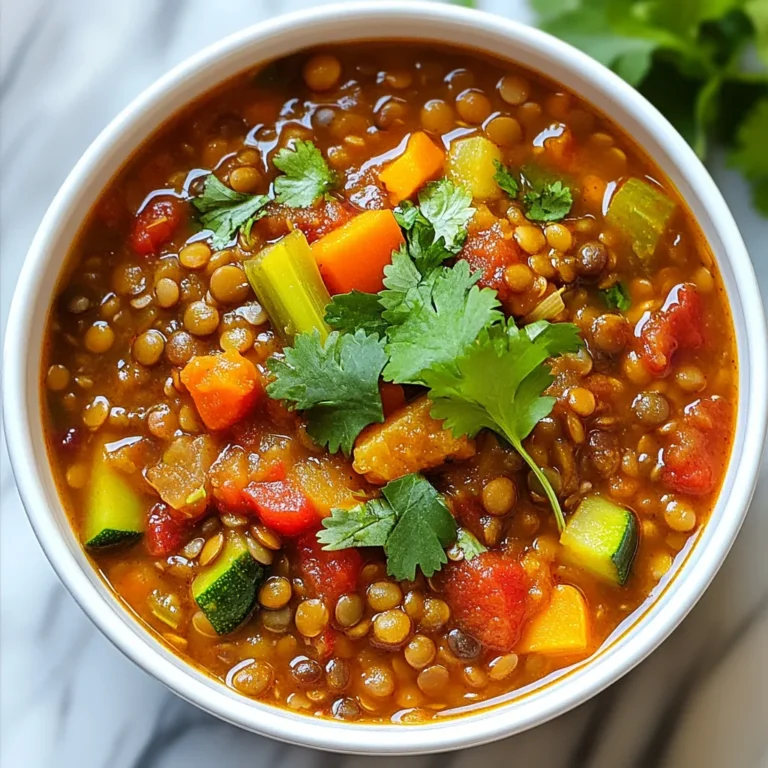Roasted Butternut Squash Soup Flavorful and Cozy Dish

Warm, rich, and comforting, Roasted Butternut Squash Soup is a must-try this season. It’s packed with flavor and easy to make. I’ll guide you through the simple steps, key ingredients, and fun variations to customize your bowl. Whether you’re sipping it on a chilly night or serving at a gathering, this soup will surely impress. Let’s dive into this cozy dish that’s perfect for everyone!The butternut squash serves as the main star. It brings a natural sweetness and creamy texture after roasting. The onion and garlic add savory notes. The spices, cumin and nutmeg, enhance the flavors with a hint of earthiness. The vegetable broth forms the base, making the soup rich. Lastly, the coconut milk or heavy cream enriches the texture, making each spoonful velvety.
Optional Garnishes and Add-ins
You can make your soup extra special with garnishes. Fresh herbs, like parsley or cilantro, add a pop of color. They also bring a fresh taste that brightens the dish. Toasted pumpkin seeds add crunch and a nutty flavor. Other options like a drizzle of extra virgin olive oil give a lovely finish. You can also try adding a pinch of chili flakes for a little heat. Each of these options makes the soup unique and fun.
Step-by-Step Instructions
Preparation: Preheating and Preparing Ingredients
First, we need to set the stage for our soup. Preheat your oven to 400°F (200°C). This hot oven will help caramelize the squash. As it heats up, let’s prepare our ingredients.
1. Peel and seed the butternut squash.
2. Cut the squash into 1-inch cubes.
3. Chop the onion finely and mince the garlic.
In a large bowl, toss the diced squash with olive oil, salt, pepper, cumin, and nutmeg. Make sure each piece gets a good coat. This step is key for flavor!
Roasting the Butternut Squash
Now it’s time to roast the squash. Spread the seasoned squash in a single layer on a baking sheet lined with parchment paper. Place it in the oven. Roast for 25-30 minutes. You want the squash to be fork-tender and a bit caramelized on the edges. This brings out the natural sweetness.
Cooking Aromatics and Combining Ingredients
While the squash is roasting, heat a splash of olive oil in a large pot over medium heat. Add the chopped onion and sauté for about 5 minutes. You want the onion to become soft and clear.
Next, stir in the minced garlic. Cook for 1-2 minutes, just until it smells great. Be careful not to burn the garlic!
Once the squash is done roasting, add it to the pot with the onions and garlic. Pour in the vegetable broth and bring it all to a gentle simmer. Let this mix simmer for about 10 minutes. This helps all the flavors blend nicely.
For the final touch, blend the soup until smooth. You can use an immersion blender right in the pot or transfer it to a stand blender in batches. Finally, stir in the coconut milk for creaminess. Check the seasoning, and adjust with salt and pepper as needed.
Tips & Tricks
Best Practices for Roasting Butternut Squash
Roasting butternut squash adds a rich flavor. Follow these steps for the best results:
– Cut Evenly: Make sure to cut the squash into 1-inch cubes. This helps it cook evenly.
– Use Enough Oil: Coat the squash well with olive oil. This enhances caramelization.
– Don’t Crowd the Pan: Spread the cubes in a single layer. Crowding can lead to steaming instead of roasting.
– Check for Doneness: Roast until the squash is fork-tender. Look for a golden-brown color on the edges.
How to Achieve the Perfect Soup Consistency
The right texture makes your soup delightful. Here’s how to get it just right:
– Blend Well: Use an immersion blender for a smooth finish. If using a stand blender, vent the lid to avoid splatter.
– Adjust Liquid: If the soup is too thick, add more broth or coconut milk. Start with small amounts to avoid over-thinning.
– Simmer: Let the soup simmer for 10 minutes after blending. This helps the flavors blend better.
Flavor Enhancements and Seasoning Suggestions
Boost the flavor of your soup with these tips:
– Spice It Up: Add more cumin or nutmeg for depth. Adjust to your taste.
– Fresh Herbs: Toss in fresh herbs like thyme or sage during blending. They add freshness.
– Citrus Zest: A hint of lemon or orange zest brightens the soup. Just a little goes a long way.
– Garnishes: Top with toasted pumpkin seeds or fresh parsley. This adds texture and visual appeal.
These tips ensure your roasted butternut squash soup is tasty and inviting.

Variations
Substitutions for Creaminess: Coconut Milk vs. Heavy Cream
You can choose between coconut milk and heavy cream for a smooth soup. Coconut milk offers a light, sweet flavor. It works well if you want dairy-free options. Heavy cream gives a rich and thick texture. If you’re looking for comfort, heavy cream is the way to go. Both choices make the soup creamy and delicious. I suggest trying both to see which one you prefer.
Adding Protein: Suggestions for Meat Lovers
If you love meat, there are tasty ways to add protein. You can stir in cooked chicken or turkey for a hearty meal. Shredded rotisserie chicken is a quick option. Another idea is to add crispy bacon bits for a smoky flavor. If you like sausage, try adding cooked and crumbled sausage. These options will make your soup more filling and satisfying.
Flavor Profile Adjustments: Herbs and Spices to Experiment With
Don’t be afraid to mix up the flavors in your soup. Fresh herbs like thyme or rosemary can bring a lovely aroma. You can add a pinch of cayenne for some heat. For a sweeter touch, try a bit of cinnamon or allspice. Experimenting with different spices can lead to new favorite flavors. Consider adding a splash of apple cider for a sweet and tangy twist. Make your soup your own by trying out new herbs and spices!
Storage Info
How to Store Roasted Butternut Squash Soup
To store your roasted butternut squash soup, let it cool first. Use airtight containers to keep your soup fresh. It will last in the fridge for about 4-5 days. Always label your containers with the date, so you know when to use them.
Freezing Tips for Long-Term Storage
If you want to freeze the soup, use freezer-safe containers. Leave some space at the top of each container. The soup will expand as it freezes. You can freeze it for up to 3 months. To use, just thaw it in the fridge overnight before reheating.
Reheating Instructions for Optimal Flavor
When you are ready to enjoy the soup, reheat it gently. Pour the soup into a pot and warm it over low heat. Stir it often to keep it smooth. If the soup seems thick, add a little water or broth to thin it out. Taste it again and adjust the seasoning if needed. This way, you will keep the soup flavorful and cozy!
FAQs
How can I make Roasted Butternut Squash Soup vegan?
To make this soup vegan, simply replace the coconut milk with more vegetable broth. You can also skip the cream altogether. The soup will still taste great and stay creamy with the butternut squash and seasonings. You can enhance the flavor by adding a splash of lemon juice or more spices.
Can I use frozen butternut squash for this recipe?
Yes, you can use frozen butternut squash. It saves time and effort. Just thaw it before use. You may need to adjust roasting time. If you skip roasting, sauté the frozen squash directly in the pot with the onions and garlic. This keeps the soup flavorful and smooth.
What are the nutritional benefits of butternut squash?
Butternut squash is rich in vitamins A and C. It’s full of fiber, which aids digestion. This squash helps boost your immune system, thanks to its antioxidants. It’s low in calories and makes a filling meal. Using it in soups can support your health while keeping you warm and cozy.
Roasted butternut squash soup is simple and tasty. We explored its key ingredients, cooking steps, and helpful tips. I shared ways to substitute for creaminess and add protein. Proper storage and reheating keep your soup fresh and delicious. As you try making this soup, remember to experiment with flavors. Adjust the recipe to fit your taste. Enjoy every warm and comforting bowl you create!







. You learned how to make Jalapeno Cheddar Cornbread step by step. This recipe includes a complete ingredient list, tips for substitutions, and ways to adjust spice levels. You also discovered how to achieve the best texture and flavor. Finally, I shared variations, storage info, and answers to common questions. Now, enjoy this tasty cornbread at your next meal. It pairs well with soups or stews and is perfect for sharing. Happy baking!](https://goldendishy.com/wp-content/uploads/2025/06/9d5f618c-dadf-46fc-a447-7ca9d5a4ec71-768x768.webp)